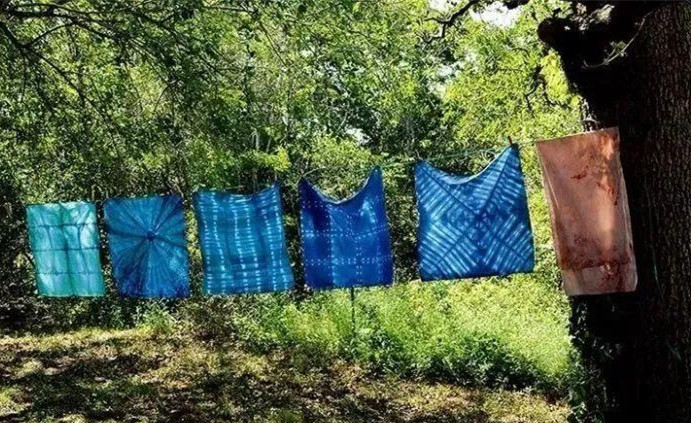Natural dyes are dyes or colorants derived from plants, invertebrates, or minerals. The majority of natural dyes are vegetable dyes from plant sources—roots, berries, bark, leaves. By growing the plants and producing your own organic dye you know exactly what is in it and what has been sprayed on the plant and you can ensure that it is indeed an organic dye and that no nasty toxic chemicals have been used.

The discovery of man-made synthetic dyes in the mid-19th century triggered a long decline in the large-scale market for natural dyes. Synthetic dyes, which could be quickly produced in large quantities, quickly superseded natural dyes for the commercial textile production enabled by the industrial revolution, and unlike natural dyes, were suitable for the synthetic fibres that followed. Artists of the Arts and But the crafts movement preferred the rich, complex colors of natural dyes, since many natural dye sources contain more than one type of dye compound, unlike synthetic dyes which tend to rely on a single type of dye compound, creating a flatter visual effect. This helped ensure that the old European techniques for dyeing and printing with natural dyestuffs were preserved for use by home and craft dyers. Natural dyeing techniques are also preserved by artisans in traditional cultures around the world.
Extracting dye from plants can be very specific to each plant type with some requiring long soaking in ammonia solutions, to others that need to be boiled for hours and then the gentle plants that cannot be overheated or the color will spoil.
With the improvement of the quality of life, more and more people like natural dyes fabrics. What do you think of organic dyeing? Welcome to leave messages under my blog.
Learn more: https://www.springtextile.com/ Or Spring Hometextile video channel: https://www.youtube.com/channel/UCMCz-yKQMYxA1e2Uscw5PHw Also can contact Tina at: [email protected]
